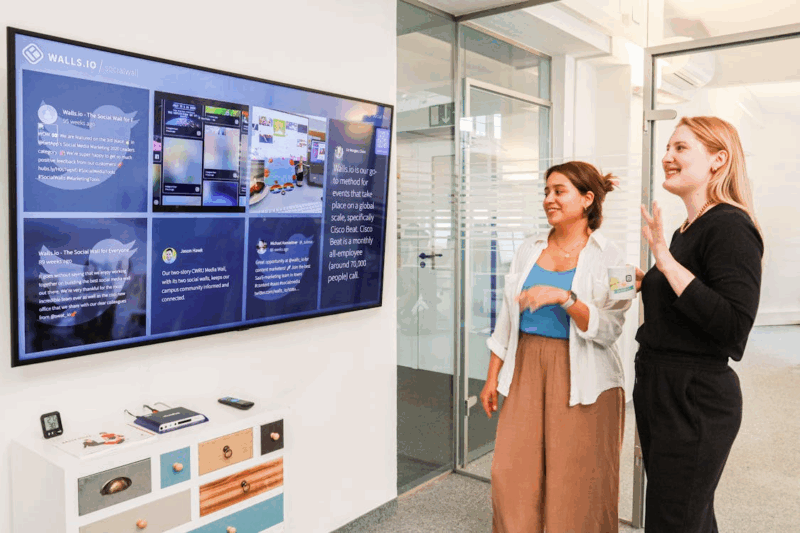
Introduction
The rise of cloud adoption, Internet of Things (IoT) devices, and hybrid or remote work models has created new opportunities for businesses but also opened doors to cybercriminals. Attackers no longer rely only on brute force methods; instead, they exploit weak configurations, unsuspecting employees, and gaps in visibility.
For modern organizations, digital risks are not abstract, they represent potential financial losses, damaged reputations, regulatory penalties, and even halted operations. This is why businesses must prioritize comprehensive cybersecurity solutions that can adapt to evolving threats and defend against both external and internal risks.
Understanding Digital Risks in Modern Enterprises
Digital risks go beyond traditional IT security concerns like viruses or spam. They include ransomware attacks that lock down mission-critical systems, insider threats where employees unintentionally or deliberately expose sensitive information, cloud misconfigurations that leave customer data unprotected, and supply chain compromises where third-party vendors become the weak link.
When these risks materialize, the consequences are severe. Downtime disrupts productivity, ransom payments drain financial resources, and compliance failures under regulations such as GDPR or HIPAA can lead to significant penalties. Beyond the numbers, reputational damage often lingers long after technical issues are resolved, making customers and partners hesitant to trust the affected organization again.
Cybersecurity professionals emphasize that the first step to building strong defenses is education. Leaders must answer a fundamental question: What is cybersecurity and why does it matter? provides an in-depth explanation of how cybersecurity safeguards digital assets, networks, and data from malicious actors. By fully understanding its role, businesses can adopt proactive measures to minimize exposure to risks.
For additional insight, resources from IBM Security and the Cybersecurity & Infrastructure Security Agency (CISA) provide up-to-date threat intelligence and best practices that organizations of all sizes can leverage.
Core Cybersecurity Solutions for Organizations

Firewalls and Network Protection
Firewalls remain the first line of defense. Traditional firewalls filter traffic based on defined rules, while Next-Generation Firewalls (NGFWs) go further by inspecting traffic deeply and blocking sophisticated attacks. Their ability to enforce segmentation also ensures sensitive areas of the network remain isolated from less secure zones.
Endpoint Security and EDR
Endpoints are often the weakest entry points. Endpoint Detection and Response (EDR) tools monitor laptops, smartphones, and IoT devices to quickly detect and contain suspicious activity. With remote work growing, securing endpoints has become mission-critical.
Identity and Access Management (IAM)
IAM solutions verify users before granting access. Multi-factor authentication (MFA) prevents unauthorized logins, while privileged access management ensures that administrators and high-level accounts are protected from misuse.
Data Encryption and DLP
Encryption keeps sensitive data safe, both in transit and at rest. Data Loss Prevention (DLP) tools add another layer by monitoring and blocking unauthorized sharing of information, especially across cloud apps or emails.
Cloud and Application Security
As businesses move workloads to the cloud, tools like Cloud Access Security Brokers (CASB) and application firewalls become vital. They provide visibility into cloud use and prevent vulnerabilities from being exploited in SaaS, IaaS, and PaaS environments.
Zero Trust Network Access (ZTNA)
ZTNA operates on the principle of “never trust, always verify.” Unlike traditional VPNs, it allows access only after verifying user identity, device health, and context. This approach is particularly effective in hybrid workplaces where employees connect from diverse locations.
SIEM and Threat Intelligence
Security Information and Event Management (SIEM) solutions aggregate logs and data from across the network, providing a single pane of glass for monitoring threats. When combined with AI-driven threat intelligence, they enable faster detection of anomalies and advanced attacks.
How Cybersecurity Solutions Protect Against Digital Risks
Strong cybersecurity solutions minimize the chances of ransomware or phishing attacks succeeding. By identifying threats early, they prevent costly damage and ensure business continuity even under attack. Moreover, they help companies maintain compliance with strict standards such as PCI DSS in financial transactions or HIPAA in healthcare.
Perhaps most importantly, effective solutions reinforce customer trust. In today’s interconnected world, clients and partners prefer to work with organizations that demonstrate robust digital security. Trusted sources like Harvard Business Review have shown that strong cybersecurity is increasingly tied to competitive advantage and digital growth.
Industry-Specific Cybersecurity Applications
- Finance requires fraud prevention systems that protect customer accounts and real-time transactions.
- Healthcare must protect patient records and telehealth platforms against ransomware and compliance violations.
- Retail faces challenges with e-commerce platforms and point-of-sale (POS) systems, where attackers often target payment data.
- Manufacturing relies on operational technology (OT) and IoT, which need advanced firewalls and segmentation to prevent disruption.
Challenges Organizations Face in Implementing Solutions
Despite the availability of advanced tools, many businesses struggle with limited budgets and resources. Managing multiple security tools can also become overwhelming without centralized oversight. The shortage of skilled cybersecurity professionals adds another layer of difficulty, forcing organizations to either outsource or automate defenses. Additionally, striking the right balance between usability and security is a constant challenge.
Best Practices for Strengthening Cybersecurity
A strong defense requires more than just technology. Regular risk assessments and penetration testing help identify vulnerabilities before attackers exploit them. A layered defense-in-depth strategy combines firewalls, endpoint protection, encryption, and training into a unified framework. Continuous education for employees ensures they can spot phishing attempts and avoid errors. Partnering with managed security service providers (MSSPs) can provide access to expertise without overwhelming internal teams.
Emerging Cybersecurity Technologies
Artificial intelligence is already transforming cybersecurity by predicting attacks based on behavior patterns. Blockchain technology offers tamper-proof ways to secure supply chains and authenticate digital identities. Quantum-safe encryption is emerging to prepare for the era when quantum computing could break existing cryptographic methods. Meanwhile, Secure Access Service Edge (SASE) is merging networking and security into unified cloud-delivered platforms that fit modern enterprises.
The Future of Cybersecurity in Risk Management
Looking ahead, autonomous systems capable of responding to threats without human intervention will become more common. Collaboration between governments, enterprises, and security vendors will be vital to fight global cybercrime. Organizations must also shift from reactive approaches to proactive, intelligence-driven defenses that evolve as quickly as the threats themselves.
Conclusion
Cybersecurity solutions are no longer optional-they are essential for protecting organizations from the growing spectrum of digital risks. From firewalls and endpoint protection to ZTNA and AI-driven threat intelligence, these solutions create a layered defense that secures data, supports compliance, and safeguards trust.
Enterprises that treat cybersecurity as a strategic business enabler, rather than an IT afterthought, will be better positioned to thrive in the digital economy. Building resilience today ensures not only protection but also long-term trust and growth.
FAQs
1. What is the most important cybersecurity solution for businesses?
No single solution is enough. A layered approach combining firewalls, identity management, endpoint protection, and continuous monitoring provides the strongest defense.
2. How can small businesses adopt cybersecurity solutions cost-effectively?
Small businesses can start with cloud-based security services, which offer enterprise-level protection without the need for large infrastructure investments.
3. How often should organizations update their cybersecurity strategies?
Cybersecurity strategies should be reviewed at least annually, but frequent updates are necessary whenever there are major changes in infrastructure, regulatory requirements, or emerging threats.










